Error F4 in Gorenje washing machine
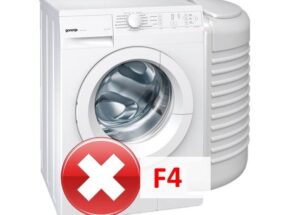 The Gorenje washing machine rarely issues code F4. Having seen this designation on the display, you can either immediately contact the service center and pay for diagnostics and repairs of the “home assistant”, or figure out the problem and eliminate the cause of the breakdown yourself. Let's figure out what the error indicates and which parts of the machine will have to be checked.
The Gorenje washing machine rarely issues code F4. Having seen this designation on the display, you can either immediately contact the service center and pay for diagnostics and repairs of the “home assistant”, or figure out the problem and eliminate the cause of the breakdown yourself. Let's figure out what the error indicates and which parts of the machine will have to be checked.
What does the error indicate?
An explanation of all the errors that a Gorenje washing machine may produce can be found in the instructions for the equipment. Therefore, if you notice that the machine has stopped working, you should immediately look at the user manual. Fault code F4 informs about a breakdown of the tachometer or motor, or a break in the wiring between them. Very rarely, the problem may be in the main control module, or more precisely, in the failure of the triac responsible for the engine and tachogenerator. What can happen to an electric motor? Typically observed:
- wear of commutator brushes;
- lamella defect;
- problems with the stator or rotor winding;
- break in the power supply.

If we talk about the Hall sensor, then usually its contacts come off or the fastenings become loose. In any case, diagnostics of the Gorenje washing machine will be required. Let's figure out what to do first, how to perform diagnostics and repair the automatic machine yourself.
They check the machine one by one: first the tachometer, then the engine, and only then the control board.
Let's check the speed sensor
One of the reasons for the appearance of error F4 is problems with the Hall sensor. The tachogenerator sits on the rotor of the electric motor and controls its speed. To check an element, you need to:
- turn off the power to the washing machine;
- turn off the tap responsible for the water supply;
- unhook the drain and inlet hoses from the body;
- Unscrew the screws holding the back panel. Remove the wall and put it aside;
- Carefully remove the drive belt from the drum pulley and motor;
- disconnect the wires from the electric motor. Before unhooking them, it is better to photograph the connection diagram. This will help you avoid mistakes when reassembling;
- unscrew the screws securing the engine;
- Gently rock the engine from side to side and pull the motor out of the housing.
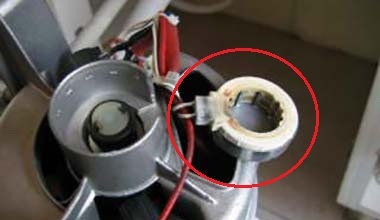
Now that you have the engine in your hands, you can take a good look at the tachometer. It happens that due to strong vibrations of the washing machine, the contacts of the element come off or its fastenings become loose. To correct the situation, it is enough to tighten the clamps or restore the connection in the circuit. When no external defects are visible, you need to check the tachogenerator with a special device - a multimeter.
The tester should be switched to ohmmeter mode and the probes of the device should be applied to the contacts of the Hall sensor. If the meter screen displays a number of about 60-70 Ohms, then the tachogenerator is working.
Next, the multimeter is switched to voltage measurement mode. At this stage of testing, you can find out whether the part produces current or not. The tester probes should also be leaned against the Hall sensor and the values on the screen should be assessed. If the readings change within 0.2 Volts, then the tachogenerator is not broken. Typically, the tachometer very rarely fails. In most cases, the cause of error F4 lies precisely in loose contacts. Therefore, first of all, you should make sure that the wiring is intact.
Graphite brushes and other motor elements
If everything is fine with the tachometer, and it is not the reason for the display of error F4, you will have to check the engine. First, you should inspect the electric brushes of the motor.These are graphite rods, they are located on the sides of the engine housing.
Gorenje washing machine brushes can become unusable within 5-6 years. They wear out and stop transmitting current to the motor rotor. As a result, engine rotation will be impossible. With severe wear, the engine may even spark. You can assess the condition of the electric brushes by disconnecting the wires from them, sliding the terminal and pulling out the graphite rod. If it is worn off by more than 50%, the brushes must be changed.
In any case, the commutator brushes are replaced only in pairs.
Even if only one rod is worn out, two elements will have to be replaced. You should remove the worn brushes, clean the area of graphite shavings and install new parts. Next, the wires are connected and the motor is returned to the housing.
If the electric brushes are in order, you can start checking the rotor winding. When a short circuit occurs, the motor overheats, the protection is activated and the engine stops starting. For diagnostics you will need a multimeter. The algorithm of actions will be as follows:
- set the multimeter toggle switch to resistance detection mode;
- attach the tester probes to the lamellas;
- evaluate the values on the device screen.
Normally, the multimeter should display a resistance of 20 to 200 ohms. If there is a break in the rotor winding, the values on the meter screen will tend to infinity. When shorted, the readings on the tester, on the contrary, will be minimal. You should also set the multimeter to buzzer mode. During this test, a short circuit can be accurately excluded. The first probe of the tester leans against the rotor, the second - in turn against each lamella. If the device starts to “squeak”, it means the motor is faulty.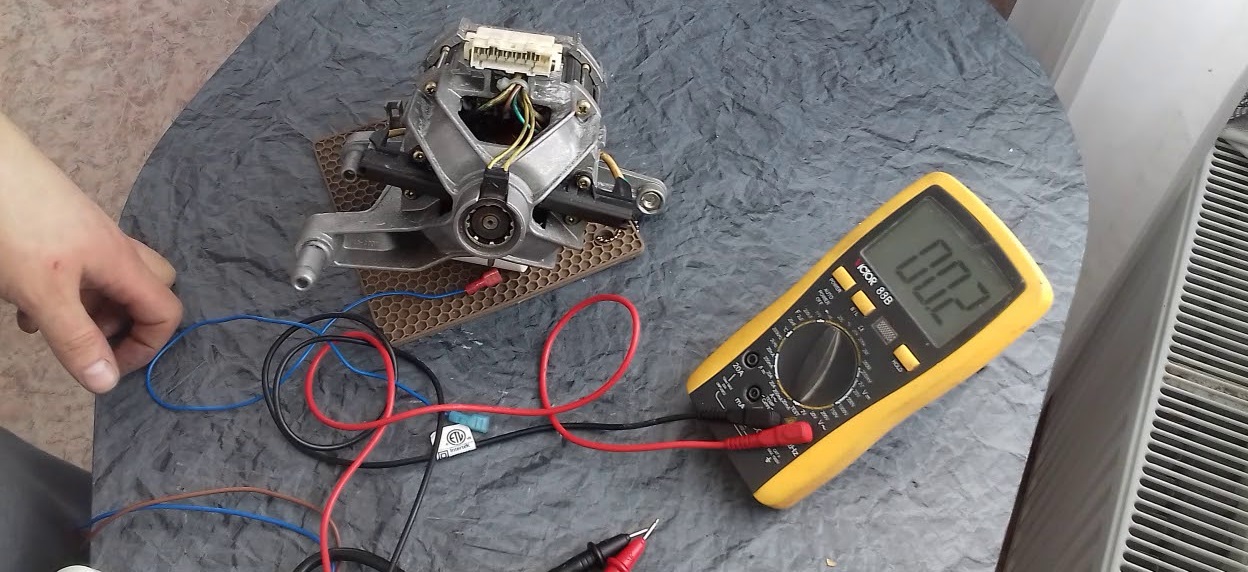
Be sure to also check the stator winding.It is necessary to close the wires together and apply a multimeter probe to the connection point (the tester must be switched to buzzer mode). If a short circuit occurs, the device will “beep.”
To reset the F4 code, you will have to eliminate its cause. In this case, it is better to buy and install a new engine. Rewinding the winding is quite difficult, and the cost of such work is comparable to purchasing a new motor. In addition to short circuits and winding breaks, the reason may be in the motor lamellas. Sometimes the plates delaminate, so inspect them. Having discovered defects, you can try to correct the situation by processing the surface of the elements on a lathe.
It is extremely rare that error F4 indicates damage to the control module of the Gorenje washing machine. It’s better not to get into the “brain” of the machine yourself - you can do even more damage to the equipment. It's better to invite a professional. The specialist will diagnose the board and fix the “home assistant”.
Interesting:
Reader comments
- Share your opinion - leave a comment

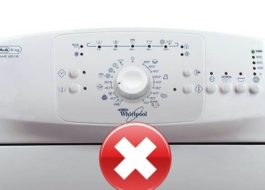


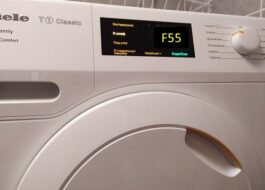

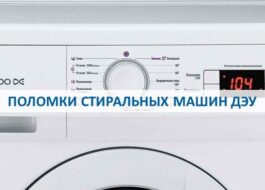














Add a comment